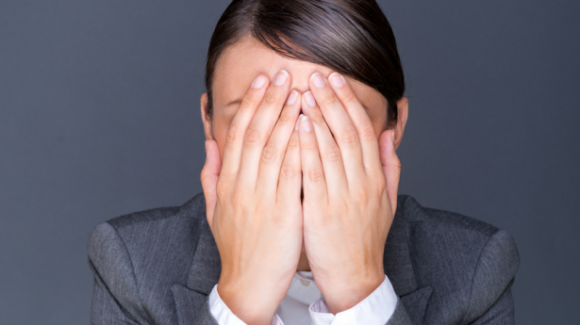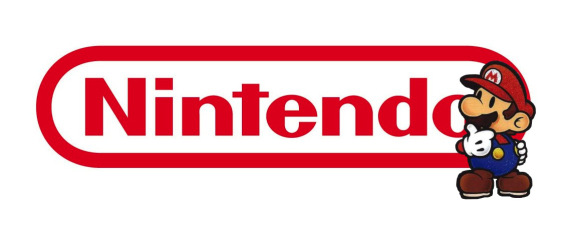【RocketNews24】10 things Japan gets horribly wrong
Posted by Michelle Lynn Dinh (Shimane-ken, Chibu-mura, 2010–13), editor and writer for RocketNews24. The following article was written by Philip Kendall (Fukushima-ken, Shirakawa-shi, 2006–11), senior editor and writer for RocketNews24, a Japan-based site dedicated to bringing fun and quirky news from Asia to English speaking audiences.
It should come as no surprise to our readers to hear that we’re big fans of Japan. Pretty much everything here works as it should, the food is amazing, the culture rich, and people are on the whole likeable and friendly. But there are times when Westerners, and Japanese who have spent any amount of time abroad for that matter, realise that Japan gets some things not just wrong but horribly wrong. So join us after the jump as we redress the balance no doubt offset by our constant admiration of Japan by discussing the 10 little things that drive us nuts in this otherwise great country.
JQ Magazine: JQ&A with Marco Lienhard, Artistic Director of Taikoza

“I always seem to discover new things and different aspects of the music when teaching people from different backgrounds. When trying to explain some of the music, some things seem to come back to mind that were deep inside myself.” (Courtesy of Marco Lienhard)
By Rashaad Jorden (Yamagata-ken, 2008-10) for JQ magazine. A former head of the JETAA Philadelphia Sub-Chapter, Rashaad currently studies responsible tourism management at Leeds Metropolitan University. For more on his life in the UK and enthusiasm for taiko drumming, visit his blog at www.gettingpounded.wordpress.com.
Marco Lienhard has been involved in Japanese music for more than 30 years, first as a member of Ondekoza and then as the artistic director of Taikoza. When building his reputation as a professional taiko player in Japan, Lienhard also mastered the shakuhachi, eventually peforming at four major shakuhachi festivals around the world. He is also the founder of shakuhachi and koto group the East Winds Ensemble.
Lienhard has also released several albums, and his music can he heard on the score of the Nintendo Wii games Red Steel and Red Steel 2. His music has also appeared on ESPN, the History Channel and PBS. In this exclusive interview, Marco discusses his efforts to expand taiko’s global audience, the biggest influences in his career, and his personal highlights among 6,000 performances (and counting).
Where are you originally from and what sparked your interest in Japan and its traditional music?
I originally came from Switzerland, the French part. I went to Japan when I was 18 on some exchange program. I was very interested to go to Japan, but did not know much about it. Once there, I discovered the shakuhachi and the taiko. I had been studying the flute, but that sound of the shakuhachi just was amazing and I decided to study the instrument and master it. The first time I heard it was when I saw Ondekoza. There was taiko, too, and that was just so exciting to see. I did not know that I could play taiko too, but the flute seemed more approachable at the time.
I joined Ondekoza a few months later thinking I would stay just a few months, but it turned into 18 years.
For me, the sound of the shakuhachi was what drew me into it, though I fell in love with the traditional art forms as well. I enjoyed the theater as well as the music. I would go see two to three plays a month, noh or kabuki.
What drew you to taiko in the first place and to become a performer? What are the most important lessons it has taught you?
When I went to Japan, I had been studying piano and flute for many years. To become a performer was just a natural progression from studying with Ondekoza and becoming a member of the group. One thing led to another—studying with them and getting into the whole practice and running aspect of the group.
Marathon running was part of the training, and before long I was running marathons. I joined in August but by November they had me run a full marathon. My first performance was in January for the Imamiya Ebisu Festival on Dotonburi Street in Namba, Osaka. Once I started performing, I got the bug and just wanted to get better at it and study the shakuhachi as well. I was the only one who studied the shakuhachi so I was put on stage very quickly. Taiko has taught me a lot. It is sort of a college or university if not more—a life lesson.
Mr. [Tagayasu] Den, who was the founder of Ondekoza, [influenced] what taiko is now. He was a great influence in the development of modern taiko, though he never really played taiko. He was the brain and the force behind the group. He would lecture us on everything. He would turn a book into lessons for us to learn and apply to stage or performing or taiko. His vision as a director also influenced me on staging of a show
You were a professional taiko player in Japan. How does one become a professional taiko player?
While I was in Japan, I joined Ondekoza and as a member of Ondekoza I studied and later performed professionally with Ondekoza, traveling around the world to perform. At the time, Ondekoza and taiko groups were still not that popular and they did not yet have an apprenticeship system. As a member, you learned the repertoire and practiced with the regular members until you were at their level and were performing among them. It took me about four months before I had my debut on shakuhachi, and taiko drummer Den, the director of Ondekoza, is the person who would decide who was playing and what instrument.
【RocketNews24】Acronyms and in-jokes: The origins of your favourite Japanese video game companies’ names
Posted by Michelle Lynn Dinh (Shimane-ken, Chibu-mura, 2010–13), editor and writer for RocketNews24. The following article was written by Philip Kendall (Fukushima-ken, Shirakawa-shi, 2006–11), senior editor and writer for RocketNews24, a Japan-based site dedicated to bringing fun and quirky news from Asia to English speaking audiences.
As much as we like to think of ourselves as free thinkers and immune to corporate advertising, there’s no denying that brand names have found their way into pretty much every facet of our daily lives. Many North Americans routinely use “Kleenex” in place of the word tissue; in the UK it’s not unusual to hear people say that they’re about to “hoover up” when referring to running a vacuum cleaner; and in its heyday pretty much any portable gaming device was casually referred to as a Gameboy.
The likes of Nintendo and Sony have been household names for years, but did you ever wonder where these names come from and what they might mean in their native language? Author of Japanmanship and game developer James Kay sheds some light on the origins of the names Japan’s biggest video game companies use, from Capcom to SNK, and has generously shared a few snippets of info with RocketNews24 for our enjoyment and nerdy enlightenment.
Find out where those world-famous names really come from after the jump.
JQ Magazine: Book Review – ‘Dreams of Love, Etc.’ from ‘Monkey Business Volume 3’
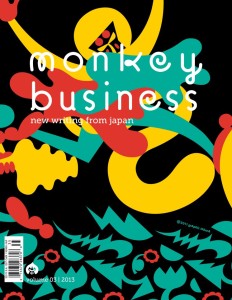
“Most striking about this piece is how astute Kawakami is in capturing not only the loneliness and boredom of daily life, but the paradox of how absurd life is and how, ultimately, it’s also really no big deal.” (A Public Space)
By Sharona Moskowitz (Fukuoka-ken, 2000-01) for JQ magazine. Sharona is interested in fresh, new voices in fiction and creative nonfiction.
In the latest issue of contemporary Japanese literature anthology Monkey Business Volume 3, Japanese novelist Mieko Kawakami writes of roses, post-earthquake malaise and a friendship that never quite consummates.
We first encounter the narrator, who inexplicably calls herself Bianca, as she stands on her porch tending to her bed of roses.
By her own admission, Bianca’s days are filled with nothing—“I don’t work. I’m not pregnant. I don’t watch TV. I don’t read books. Come to think of it, I do absolutely nothing.” What she is, however, is a wife—a loaded title for a Japanese woman with its implications of duty and decorum. Yet she wants more—much more. What exactly, she isn’t quite sure.
Stuck in the doldrums of her daily existence, she thinks and rethinks the simplest decisions, her inner monologue playing out like T.S. Eliot’s “The Love Song of J. Alfred Prufrock.” (“Shall I part my hair behind? Do I dare to eat a peach?”) What little volition she has is spent on tending to her plants, a hobby she developed after the earthquake, perhaps as an outlet for her nurturing tendencies, or, more likely, as a reminder that life was returning to normal after the shaker and its ensuing chaos.
【RocketNews24】Ninja life skills: 7 tips to make learning Japanese that little bit easier
Posted by Michelle Lynn Dinh (Shimane-ken, Chibu-mura, 2010–13), editor and writer for RocketNews24. The following article was written by Philip Kendall (Fukushima-ken, Shirakawa-shi, 2006–11), senior editor and writer for RocketNews24, a Japan-based site dedicated to bringing fun and quirky news from Asia to English speaking audiences.
Despite its apparent difficulty, Japanese is fast becoming one of the world’s most desirable languages to learn, with more and more Westerners studying it every day. Eventually, though, we all hit a wall with our studies and feel like we’re not making any progress. The books you threw yourself into with such enthusiasm start to become a chore to open, the army of kanji characters you have yet to study stare back at you with mocking disdain, and despite all the hours you put in you still can’t quite keep up with that anime you were determined to watch without subtitles. It happens to the best of us, but there are ways to break out of this rut, not to mention rekindle that love for studying Japanese, or any other language for that matter.
So today we’d like to bring you our short list of tips and tricks for boosting your Japanese language ability and make studying less of a chore. The following is a combination of both tips and experiences of foreigners who have achieved varying degrees of fluency in the language and our combined knowledge. It’s by no means the final word in language study, but give some of these a try and we’re sure you’ll be surprised at how quickly your Japanese proficiency improves.
JQ Magazine: 2013 JETAA National Conference in Minneapolis Recap
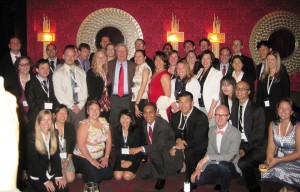
JETAA USA National Conference participants in Minneapolis with former Vice President of the United States Walter Mondale, Sept. 26, 2013. (Courtesy of Yeu-Li Huang)
By Yeu-Li Huang (Yamanashi-ken, 2007-2010) for JQ magazine. Yeu-Li is the current chapter secretary of the JET Alumni Association of the Southeast (JETAASE).
MINNEAPOLIS, Minn. – The JET Alumni Association of Minnesota (JETAAMN) hosted this year’s USA National Conference from Sept. 26-29 with assistance from the Ministry of Foreign Affairs (MOFA) and the Council of Local Authorities for International Relations (CLAIR). Attendees included delegates from all 19 JETAA USA chapters, as well as representatives from CLAIR, MOFA, and the Consulate General of Japan at Chicago.
Each national conference spotlights particular challenges facing the JETAA community. This year was no different, as critical topics included continuation of the JETAA national initiatives, common issues facing JETAA chapters, membership outreach, and collaboration between JETAA chapters and other Japan-related organizations.
Thursday, Sept. 26
The conference got underway with an evening reception at the restaurant Crave, featuring former Vice President of the United States Walter Mondale as a special guest. A native Minnesotan, Mondale was also the U.S. ambassador to Japan from 1993-96. In his speech, Mr. Mondale praised the work that the JET Program has done in building personal relationships between Japan and the U.S., and called for “JETers” to continue fostering those ties.
JQ Magazine: JQ&A with Producer Jeron Moore on ‘The Legend of Zelda: Symphony of the Goddesses’
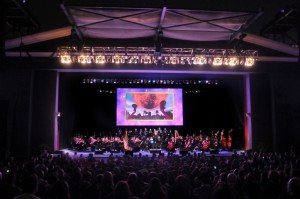
Producer Jeron Moore on Symphony of the Goddesses: “We cater to all ages. You’ve got to remember that Zelda is 27 years old now. We’re seeing fans spanning three generations buying tickets to the show.” (Andrew Craig)
By Vlad Baranenko (Saitama-ken, 2000-02) for JQ magazine. Vlad is an avid photographer.
F. Scott Fitzgerald famously said, “There are no second acts in American lives.”
Fortunately, there are Second Quests.
Over 25 years after the blockbuster Nintendo video game series first hit the scene bearing its namesake in honor of Fitzgerald’s wife, The Legend of Zelda: Symphony of the Goddesses returns for an encore run in some of North America’s most distinguished theater halls (including, for the first time, a pair of dates in Mexico). Presented by Jason Michael Paul Productions, the show—currently on tour through December—presents the very best of Zelda’s lush symphonic scores paired with a live orchestra and visual effects.
In this JQ exclusive, producer and lead creative Jeron Moore sounds off what’s new about the show, the experience of working with Nintendo to bring the ultimate live experience to fans, and the evolution of Link throughout the saga’s rich history.
What was the inspiration for this installment of the show?
Well, if you’re a Zelda aficionado, you’ll recognize the term “Second Quest” from the New Game+ mode from the original 1986 entry, The Legend of Zelda, on the NES. It’s a mode you’d unlock once you defeated the game, and what it did was reorganize the game a little bit, made the dungeons a bit harder, made the items a bit more challenging to find, made the bosses a bit more difficult to defeat. We’ve taken the idea of visiting familiar places while encountering new challenges and applied that to the Second Quest, which has been revamped to include a half hour of new material while keeping all of the classics that make The Legend of Zelda what it is.
What surprises can we expect from the Second Quest?
They wouldn’t be surprises if I told you! But I will hint that we’re celebrating the 20th anniversary of a particular, very special handheld title. We’ve also finally included some music from one of the most recent Zelda games, which we steered cleared of with the first season program. And at the request of Mr. Eiji Aonuma, you can also expect to see a fully revamped Wind Waker segment, featuring gorgeous visuals from the game’s recent HD release on the Wii U. The Wind Waker has never looked better.
How did the idea for format of the show come about? The large screen, the orchestra?
It’s simple. There’s just nothing classier than a large orchestra tuning up, then performing powerhouse symphonic interpretations of your favorite music, no matter the genre. For The Legend of Zelda, we wanted Symphony of the Goddesses to be as accessible as possible. There’s nothing worse than sitting in a room and feeling left behind because you didn’t walk in with a prerequisite knowledge of the material. The music undoubtedly stands on its own, but incorporating visuals opens it up and informs the entire audience of context, not just those who’ve played the games before. Of course, being the fans that we are, we’ve carefully edited the footage into an entertaining narrative that, we feel, makes sense. With that, we’re able to hit on many of the important moments universally adored by fans, so yeah—lots of inside jokes, but we try not to let anything fall flat.
CLAIR Magazine “JET Plaza” series: Suzanne McMillan (Ehime)
Each month, current and former JET participants are featured in the “JET Plaza” section of the CLAIR Forum magazine. The October 2013 edition includes an article by JET alumn Suzanne McMillan. Posted by Celine Castex (Chiba-ken, 2006-11), currently programme coordinator at CLAIR Tokyo.
********

“Working in the media and recruitment space requires a high level of networking ability and the confidence to quickly reach out and engage with new people. My time spent in Japan provided me with this skill set along with resilience and the ability to adapt quickly to changing circumstances.”
Originally from Northern Ireland, Suzanne McMillan (Ehime-ken, 1998-2001) holds an MA in History from Aberdeen University in Scotland. Her media career began in the UK when she joined the BBC initially as Researcher and later as an Assistant Producer. She has held the positions of Chairperson within the JETAA NI Chapter and NI Country Representative within JETAA International. Suzanne is currently a Project Manager and BDM Executive at Webpublication in Sydney, Australia where she coordinates digital publishing projects.
The Time of my Life
Nervously twiddling my thumbs, I sat before the interview panel and hoped that my answers would bring me a step closer to my long awaited place on the JET Programme. What had brought me to this point in my life? Well, as a child a favorite uncle had told me many tales of his exotic life in Japan and passed onto me the gift of a hand towel imprinted with a map of Shikoku. This tattered piece of history proudly hung on the wall of my university dorm room and later traveled with me on my flight to Tokyo Orientation; beginning my new life in Japan.
For the next three years, life as an ALT provided so many memorable experiences. I shared stories with teachers, students and fellow JET participants; discussing UK sports, changing political events in Northern Ireland and the different approaches to education and family life. Local neighbors became my friends and my knowledge of Japanese history grew with any tale they would tell of their past. The world seemed a smaller place and I realized the impact of JET; cultural exchange that reaches a deeper level and enables lifelong friendships that are priceless.
Even now memories of JET spring to mind during everyday tasks; the particularly cold winter when the supervisor at my BOE bought all JET participants a puffer jacket to keep warm, ensuring that we could all be spotted at a distance of 100 meters waddling with the extra bulk. Warmth feels my heart when I recall the kindly teacher who delivered boxes of mandarin oranges to your front door if you happened to be sick. I have never been able to hold a mandarin since without seeing his caring face. And yes, I hold myself fully responsible for many Japanese adults who I taught when they were kindergarten age and who now having an Irish lilt to their accent after repeating key English words after me several times over. Read More
【RocketNews24】Feel better fast: Eight home remedies from the little old ladies of Japan
Michelle Lynn Dinh (Shimane-ken, Chibu-mura, 2010–13) is an editor and writer for RocketNews24, a Japan-based site dedicated to bringing fun and quirky news from Asia to English speaking audiences.
The only thing worse than catching a cold is feeling like you’re about to catch a cold. That achiness you can feel in your bones, followed by dread, worry and the thought, “I’m too busy to get sick now!” It’s enough to make you sick on the spot.
But fear not, the grandmothers of Japan have a plethora of home remedies that’ll get you feeling better in no time. Some may be little more than old wives’ tales, but when you’re feeling under the weather, why not drink hot onion water or smear ginger on your forehead. It actually might be good for what ails you.
Kyodo News “Rural JET alumni” series: Daneeta Loretta Jackson (Fukuoka)

“My JET programme experience and my seven years in Japan have had a profound influence on me. It changed me into a more peaceful, communal person.”
News agency Kyodo News has recently been publishing monthly articles written by JET alumni who were appointed in rural areas of Japan, as part of promotion for the JET Programme. Below is the English version of the column from September 2013. Posted by Celine Castex (Chiba-ken, 2006-11), currently programme coordinator at CLAIR Tokyo.
********
Daneeta Loretta Jackson (Fukuoka-ken, Buzen-shi, 1993-95) was born and raised in the backwaters of Southeast Louisiana. She was educated at public school where she discovered her love for storytelling. She holds a B.A. in English from Loyola University of the South, an M.A. in English from George Mason University, and an M.A. in the Art and Technique of Filmmaking from the London Film School. Her hobbies are international travel, watching movies, anything having to do with dogs, and sleeping. She works as a writer and filmmaker and is a Creative Producer at the ElekTrik Zoo, an arts partnership she co-founded with her husband, Patrick Jackson. She joined the JET programme in 1993 because she wanted adventure. It had a profound affect on her and changed the course of her life.
I was a JET Programme participant from 1993 to 1995 in Buzen-shi, Fukuoka-ken. I never expected to go to Japan. I never dreamed about it when I was a child like so many of my counterparts did. I don’t mean to sound flippant, but the JET Programme for me was a kind of accident. It is too long of a story to recount here. In short, my husband applied for the both of us. He requested a rural post in Fukuoka-ken because a boy from his Japanese baseball team in California was from Fukuoka. When he got word we had been accepted, he told me we were going to Japan. I had about two months to prepare.
Before I knew it, I was on a plane to Tokyo in July of 1993. The first few days were a whirlwind. The orientation in Tokyo and the jet lag made it seem like I was in some sort of dream. I had no idea what awaited me in the countryside, I couldn’t speak much Japanese, and everything seems so strange… so different from my native Louisiana. Read More
【RocketNews24】Possibly the greatest textbook doodles of all time
Michelle Lynn Dinh (Shimane-ken, Chibu-mura, 2010–13) is an editor and writer for RocketNews24, a Japan-based site dedicated to bringing fun and quirky news from Asia to English speaking audiences.
Remember back in high school when you’d opened up your textbook to find George Washington picking his nose and Joseph Stalin with a peg leg and eye patch. It was enough to make you bow down and thank the graffiti gods for giving you a much needed distraction from the incessant ramblings of your instructor.
Textbook doodles seem to transcend national borders and bored students from all over the world appear to have a penchant for defiling educational tools. We’ve already shown you some from Asia, a continent that seems to be home to an abundance of bored students with idle hands. Now let’s take a look at textbook doodles from Twitter user and Japanese high school student, Chanta, who takes it to a whole other level, actually erasing parts of his textbook to create entirely different, albeit twisted, pictures. Former and current JETs might appreciate Chanta’s preference for using his English textbook as his canvas.
Get the latest issue of the JETAA Ottawa Newsletter
Via JETAA Ottawa. Posted by Gemma Villanueva (Fukushima 2008-11), the editor for the JETAA Ottawa Newsletter.
Download your digital copy of the JETAA Ottawa Newsletter now!
What’s inside this issue?
Happy reading!
JQ Magazine – Book Review: ‘The Way of Taiko’

“Those who want to learn more about taiko, whether they are novices in Japanese drumming or have been playing for several years, will be amazed by the rich history and culture of the genre.” (Stone Bridge Press)
By Rashaad Jorden (Yamagata-ken, 2008-10) for JQ magazine. A former head of the JETAA Philadelphia Sub-Chapter, Rashaad currently studies responsible tourism management at Leeds Metropolitan University. For more on his life in the UK and enthusiasm for taiko drumming, visit his blog at www.gettingpounded.wordpress.com.
Many JETs—myself included—have been drawn to taiko because we love the sound emanating from the drums and want to partake in something traditionally Japanese. But what do we really know about taiko?
For those looking to expand their knowledge of Japanese drumming, Heidi Varian’s The Way of Taiko (now available in a new edition from Stone Bridge Press) is a great way to go. Varian, a member of the San Francisco Taiko Dojo, introduces readers to the history and contemporary culture of the music that is a symbol of Japan to many.
Varian calls taiko the “heartbeat of Japan,” and that’s appropriate because the drum was a method of gathering townspeople or letting them know about any impending danger, in addition to being used to celebrate festivals. Like seemingly everything that’s considered an integral part of Japan, taiko has an enormously long history clouded in mystery (it actually may not have originated in Japan), but Varian explores it.
She not only examines taiko’s beginning and its importance in ancient Japan, but how taiko appeared in traditional Japanese theatrical forms like noh and kabuki. She also writes about how taiko gained a foothold in the United States—the first documented taiko drum appeared in San Francisco in 1910—and its pioneers (such as Seiichi Tanaka and Kenny Endo) on this side of the Pacific. Varian also doesn’t also live in the past when talking about taiko, as she raises important issues about its future.
【RocketNews24】How to survive an earthquake (or zombie outbreak): Expert advice and items to prepare
Posted by Michelle Lynn Dinh (Shimane-ken, Chibu-mura, 2010–13), editor and writer for RocketNews24. The following article was written by Philip Kendall (Fukushima-ken, Shirakawa-shi, 2006–11), senior editor and writer for RocketNews24, a Japan-based site dedicated to bringing fun and quirky news from Asia to English speaking audiences.
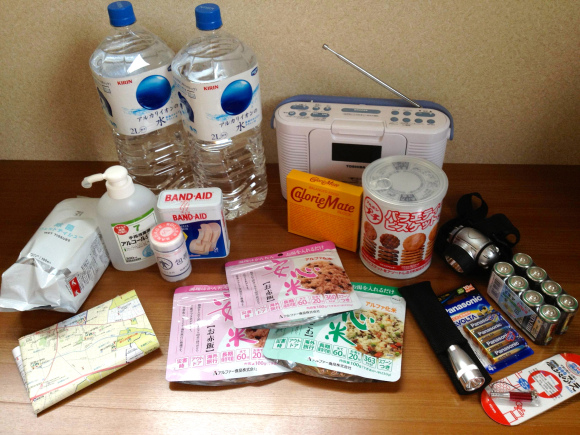
Anyone living in Japan for any length of time would be mad not to spend an hour throwing a bag together.
Being the most earthquake-prone country in the world, earthquake drills are as common in schools in Japan as fire drills are in the West. Knowledge of what to do and how to prepare for big quakes is essential, but many foreigners visiting or living in Japan are simply not used to larger tremors and have little or no idea how to respond should the earth start to rumble. Thankfully, even in Japan the chances of being hurt or killed in an earthquake are relatively slim, but it’s important to know what you can do to prepare. Combining our own first-hand experience with the expert advice of a seismologist from the California Institute of Technology, the following article not only discusses how best to respond in the event of an earthquake, but also lists the essential items that anyone living in Japan or any other earthquake-prone country should have stowed away in their earthquake preparedness kit.
Talking safety is never the most exciting subject, and no one’s asking you to go all Dwight Schrute and build a nuclear fallout shelter here, but it pays to be ready. And if the thought of tooling up in the name of earthquake preparedness fails to get your heart pumping, simply substitute the word “earthquake” for “zombie outbreak” and the process will become infinitely more fun.
Report: Children Bitten by Lion, Parent’s Ecstatic
Posted by Benjamin Martin, a JET from 2008-2013 in Okinawa, publisher of the blog MoreThingsJapanese.com and author of the award-winning YA fantasy series Samurai Awakening (Tuttle).
 Yes. This past week on Kume Island, children were sent screaming as a single wild lion went rampaging through a peaceful neighborhood. Well, it was mostly peaceful. Since it was the full moon and August 15th of the Kyureki calendar, there were also a bunch of people around banging gongs and playing music. There were also some creepy Hacaburo running around egging the lion on. Warned in advance that something might be going on, I showed up with some local friends just after sunset with my camera ready. What I saw shocked me, and soon my former students were running for cover… behind me.
Yes. This past week on Kume Island, children were sent screaming as a single wild lion went rampaging through a peaceful neighborhood. Well, it was mostly peaceful. Since it was the full moon and August 15th of the Kyureki calendar, there were also a bunch of people around banging gongs and playing music. There were also some creepy Hacaburo running around egging the lion on. Warned in advance that something might be going on, I showed up with some local friends just after sunset with my camera ready. What I saw shocked me, and soon my former students were running for cover… behind me.
By the end of the night no less than 5 children had been bitten. When asked, parents responded that they were overjoyed. One parent, while holding a screaming infant, smiled widely and talked about how smart he would be while neglecting to stop the lion from continuing its rampage.
For more on this story, visit MoreThingsJapanese.com for pictures and video.

